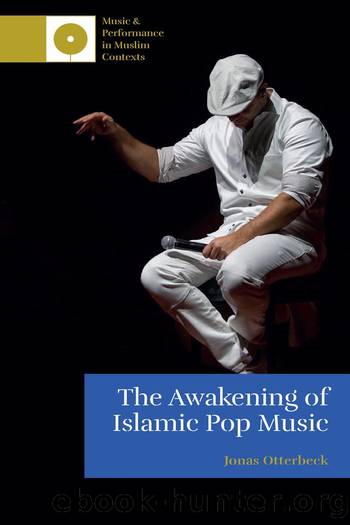The Awakening of Islamic Pop Music by Jonas Otterbeck;

Author:Jonas Otterbeck;
Language: eng
Format: epub
Publisher: Edinburgh University Press
Normative Masculinity
It would be tremendously naive (and entirely erroneous) to assume the existence of a single Islamic masculinity running through 1,400 years of Islamic interpretations, anchored in the minds of Muslims, at any given place. Masculinity is constructed in time and space as an ongoing, never ending, plural project, although certain features do appear with a high frequency due to, for example, a common discursive tradition, economic conditions and patriarchal contexts (Bourdieu 2001). However, in normative literature certain advice about manliness cut across centuries. In Sunni twentieth century âilm al-akhlaq (the knowledge of the character) literature, clear character models are promoted, giving Muslim men (and women) unambiguous advice on all matters from personal hygiene to how to relate to other people. A man is heterosexual, preferably married, a father, has means and shares with the needy. He is mild-mannered, just, honest, polite, tidy and clean, and active and serious in his religiosity. Further, he is ready to take a stance on behalf of his community â morally, economically and, if necessary, by force. A man is not greedy, selfish, smallminded or prone to gossip and, of course, he is not the opposite of the already mentioned qualities. But to a growing extent, the ideology of personality celebrated in societies marked by both individualisation and individuation is prompting active Muslims to live and accept a diversity of lifestyles as valid and possible. In a pluralist and individualist world, how does a man dress then? How does he relate to other genders, adherents of other religions, to political powers, to music?
In literature published by Awakening, one clearly finds a preference for the mild-mannered and tidy man who is serious about his religion, for example in Abu Ghuddahâs ([2001] 2011b) Islamic Manners. Is this masculinity also enacted in Awakening media? In the Awakening book, one can read the following:
Then we brainstormed different characters with Bara and Maher. They chose the idea of having Maher in the United States, conveying a modern and trendy individual who is spreading love and happiness to the different characters in the video. (Director Hamzah Jamjoom in the Awakening book, p. 112)
Here the director is discussing the widely viewed music video âYa Nabi Salam Alaykaâ (Oh Prophet, peace be upon you, 2011), shot at different locations in Chicago, in which Maher Zain walks around offering people handwritten letters containing the Arabic words âsalla âala l-habibâ (blessings upon the beloved, i.e. the Prophet Muhammad). As with a number of other Awakening songs, it is composed in relation to a celebration, in this case mawlid al-nabi, the celebration of the birth of Muhammad. In the music video, Maher Zain is casually dressed, wears a tasbih, an Islamic rosary, as a necklace, and has the broadest of smiles. Hamzah Jamjoom had insisted that he wanted to show Maher Zain as happy and untroubled, according to an interview I had with Maher Zain in 2014. Maher Zain hugs male recipients, or shakes their hands, but not female ones, he ruffles the hair of a child.
Download
This site does not store any files on its server. We only index and link to content provided by other sites. Please contact the content providers to delete copyright contents if any and email us, we'll remove relevant links or contents immediately.
Aircraft Design of WWII: A Sketchbook by Lockheed Aircraft Corporation(32139)
The Great Music City by Andrea Baker(30794)
Call Me by Your Name by André Aciman(19921)
The Art of Boudoir Photography: How to Create Stunning Photographs of Women by Christa Meola(18413)
The Secret History by Donna Tartt(18207)
Shoot Sexy by Ryan Armbrust(17563)
Plagued by Fire by Paul Hendrickson(17117)
Portrait Mastery in Black & White: Learn the Signature Style of a Legendary Photographer by Tim Kelly(16877)
Adobe Camera Raw For Digital Photographers Only by Rob Sheppard(16804)
Photographically Speaking: A Deeper Look at Creating Stronger Images (Eva Spring's Library) by David duChemin(16504)
Ready Player One by Cline Ernest(14018)
Pimp by Iceberg Slim(13796)
Bombshells: Glamour Girls of a Lifetime by Sullivan Steve(13697)
The Goal (Off-Campus #4) by Elle Kennedy(13207)
Art Nude Photography Explained: How to Photograph and Understand Great Art Nude Images by Simon Walden(12858)
Kathy Andrews Collection by Kathy Andrews(11340)
The Priory of the Orange Tree by Samantha Shannon(8630)
Thirteen Reasons Why by Jay Asher(8461)
The remains of the day by Kazuo Ishiguro(8410)
